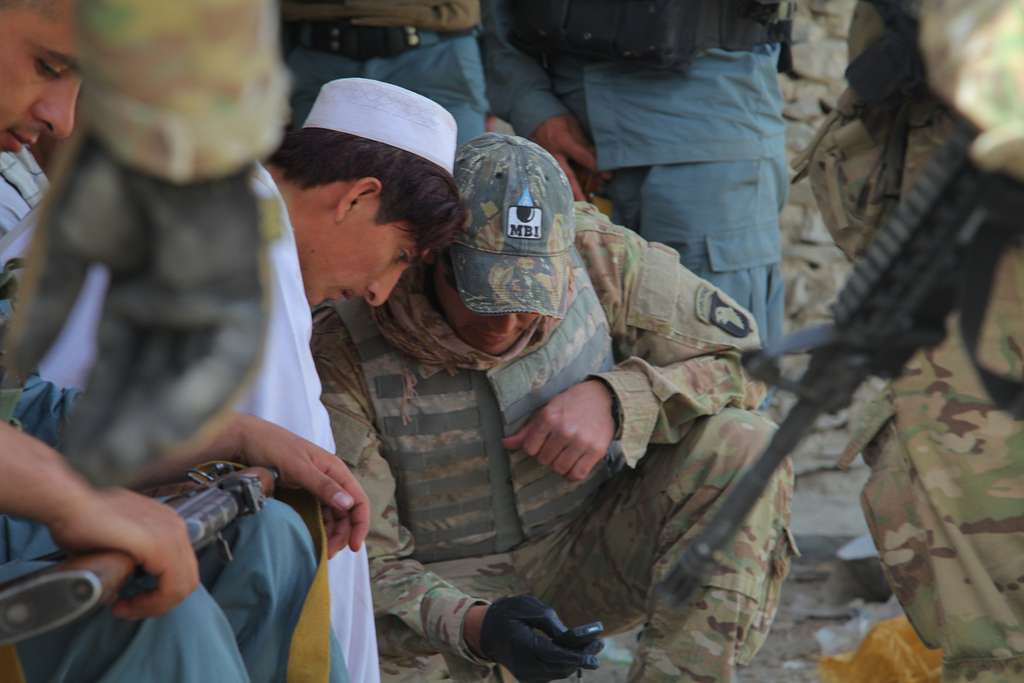Risking Money and Risking Lives: Disproportionate Congressional Oversight
The Government Performance Results Act (GPRA) requires the Executive Branch to conduct detailed strategic planning prior to spending money. The laws that govern the President when he introduces the men and women of the United States (U.S.) Armed Forces into hostilities, specifically Article II of the Constitution, the War Powers Resolution, and the Authorizations for the Use of Military Force for both Iraq and Afghanistan, have no similar strategic planning requirement.
Published by The Lawfare Institute
in Cooperation With

The Government Performance Results Act (GPRA) requires the Executive Branch to conduct detailed strategic planning prior to spending money. The laws that govern the President when he introduces the men and women of the United States (U.S.) Armed Forces into hostilities, specifically Article II of the Constitution, the War Powers Resolution, and the Authorizations for the Use of Military Force for both Iraq and Afghanistan, have no similar strategic planning requirement. Congress should fix this disparity to demonstrate that it cares as much about how the men and women of our Armed Forces are introduced into hostilities as they do about the way money is spent. In 1993, Congress wrote the GPRA "[t]o provide for the establishment of strategic planning and performance measurement in the Federal Government, and for other purposes." On January 4th, 2011, President Barack Obama updated existing legislation by signing the GPRA Modernization Act of 2010 into law. The GPRA requires each agency within the Executive Branch to write a strategic plan that covers a four year timespan. These are highly detailed documents that contain a mission statement, general goals and objectives, and a description of how the goals and objectives are to be achieved. The text of the GPRA Modernization Act contains a variation of the word "strategy" 27 times, the word "mission" 7 times, a variation of the word "goal" 151 times, and "objective" 16 times. The repeated use of these words demonstrates the serious view Congress takes of the strategic planning done by the Executive Branch prior to spending money. There is nothing comparable in any of the statutes that variously authorize the use of military force or require other forms of reporting to Congress in relation to the use of force. This is a striking contrast. The President's authority as Commander-in-Chief of the U.S. Armed Forces is established in Article II of the Constitution and limited by the War Powers Resolution. The President can only introduce the U.S. Armed Forces into hostilities pursuant to a declaration of war, specific statutory authorization, or a national emergency created by an attack---or an imminent attack---upon the U.S., its territories or possessions, or its armed forces. When exercising this authority the President must submit a report to Congress within 48 hours setting forth the circumstances necessitating the introduction of U.S. armed forces into hostilities; the constitutional and legislative authority under which such introduction took place; and the estimated scope and duration of the hostilities or involvement. Although this report provides some details to Congress, it does not speak to strategic planning as does the GPRA. Additionally, the words "strategy", "mission", "goal", or "objective" are nowhere to be found within the War Powers Resolution. The lack of these words---particularly when contrasted with the detail required by the GPRA---suggests that Congress is comfortable allowing the President to introduce the men and women of the U.S. Armed Forces into hostilities without a strategic plan. The War Powers Resolution was signed on November 7, 1973, whereas the first GPRA was signed 20 years later. Based upon this difference in time, it may not be appropriate to compare the congressional reporting requirements of the War Powers Resolution to the strategic planning requirements detailed in both version of the GPRA. However, since Bill Clinton signed the first GPRA in 1993, the President has been given additional specific statutory authorities whereby he can introduce the U.S. Armed Forces into hostilities. The President recently exercised these additional statutory authorities when introducing the men and women of the U.S. Armed Forces into hostilities against the Islamic State of Iraq and the Levant (ISIL). There is ongoing debate regarding the legal basis to strike ISIL, which centers around the President's authority under Article II of the Constitution, Public Law 107-40 signed on September 18, 2001 authorizing the use of U.S. Armed Forces against those responsible for the attacks of September 11, 2001, and Public Law 107-243 signed on October 16, 2002, "Authorization for Use of Military Force Against Iraq." Regardless of which authority the President is currently using to strike ISIL, none of them requires strategic planning as the current GPRA does. One is entitled, particularly given the blood and treasure expended during over ten years of overseas contingency operations, to wonder why not. And at least in my view, they really should. Somewhere between the voluminous information the President must provide to Congress as part of the annual budget request and the scarce information he must provide when introducing the men and women of the U.S. Armed Forces into hostilities, a balance must be struck. As a taxpayer, I am pleased that Congress demands so much strategic planning as part of the budget process. As a Veteran, I am disappointed that Congress does not demand a near-equal level of strategic planning when the President sends the men and women of the U.S. Armed Forces “once more unto the breech.” I look forward to the day when a morally courageous member of Congress puts forth legislation that enhances the reporting requirements contained in the War Powers Resolution or does the same in future authorizations for the use of military force. At a minimum, this reporting should mirror the strategy, mission statement, goals, and objectives structure in both versions of the GPRA. If Congress truly wants to serve its constituents, it should focus its oversight equally on the expenditure of funds and the risking of lives. Phil Walter has served in the military, the intelligence community, and the inter-agency. The views expressed here are those of the author alone and do not contain information of an official nature. He tweets @philwalter1058 and blogs at www.philwalter1058.com.





